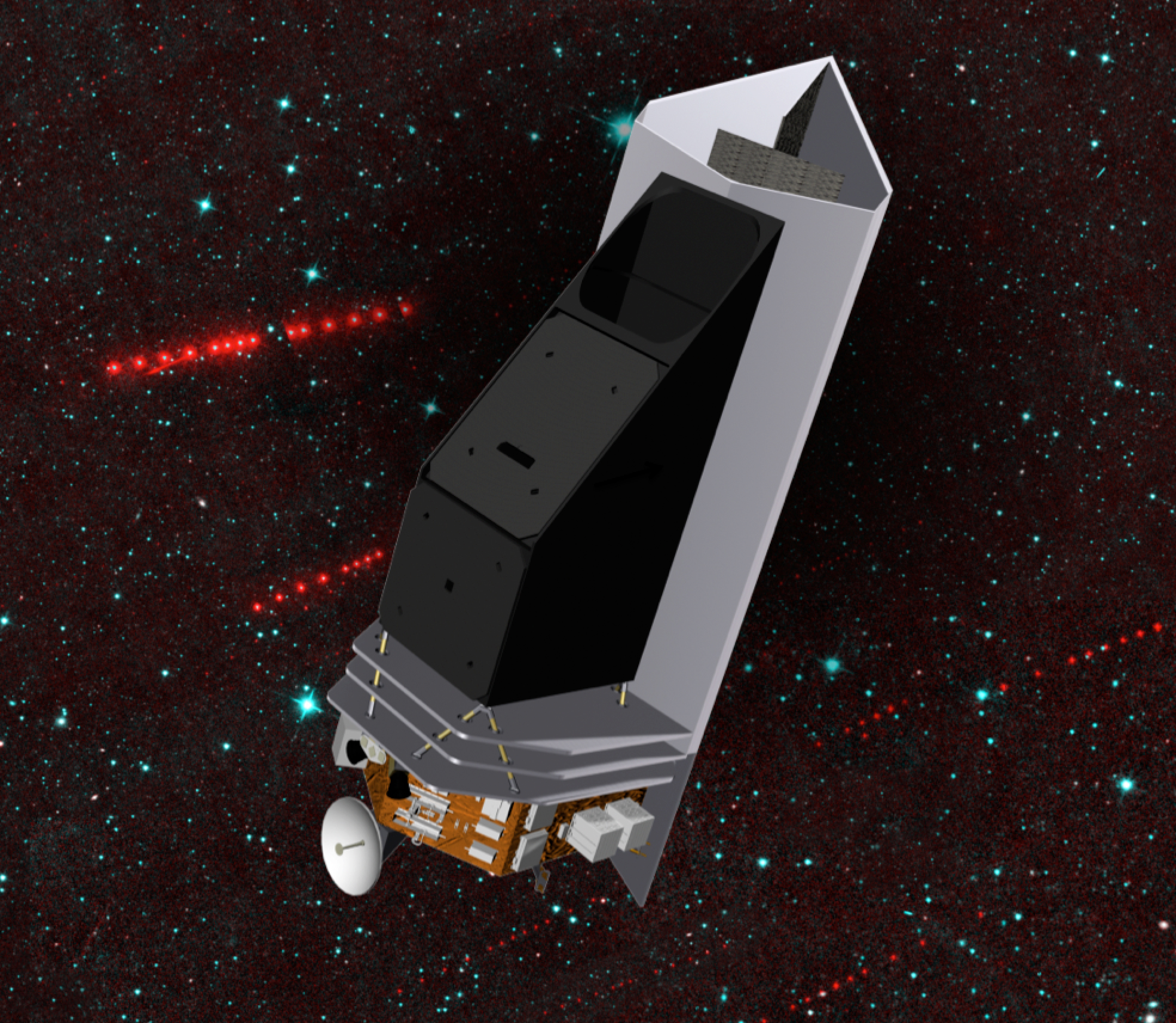NASA Wants a New Space Telescope to Hunt Asteroids That May Threaten Earth

The pace of finding threatening near-Earth objects is slowing, so the planetary defense community is looking forward to a new space telescope to help in its quest to locate 90% of all city-threatening asteroids.
In a late September presentation to NASA's planetary science advisory committee, Planetary Defense Officer Lindley Johnson said that the community has found about 35% of the predicted population of asteroids that are considered near-Earth objects (NEOs) and are roughly 450 feet (140 meters) in diameter or larger. The known head count stood at 8,788 such worlds in late September, he said, and scientists are "struggling" to discover 500 new such rocks a year.
To help with searching, the community is backing a proposal called the Near-Earth Object Surveillance Mission (NEOSM). That mission is adapted from a previous mission concept called the Near-Earth Object Camera (NEOCam), which went through several rounds of proposals for launch with no success. Most recently, NEOCam was a finalist for the smaller Discovery-class planetary science mission in 2015; it received some funding, but was not selected for launch.
Related: 5 Reasons to Care About Asteroids
In September, Thomas Zurbuchen, NASA's associate administrator for science, announced that the development of NEOSM will go forward under the leadership of NASA's Jet Propulsion Laboratory in Pasadena, California. It is expected to launch no earlier than 2025, pending funding availability from the agency's planetary defense program. Within a decade of its launch, Zurbuchen said, the agency should finally meet the congressional goal — but that will be at least 15 years after missing the 2020 deadline.
NASA and a large network of partner telescopes and international agencies all work together to search for potentially threatening worlds to Earth. (No imminent threats have yet been identified.) Part of their mandate comes from Congress, which in 2005 directed NASA to find at least 90% of potentially hazardous near-Earth objects of 450 feet or larger by the end of 2020. In recent years, NASA has said that funding issues mean it will not meet that deadline.
The peak discovery rate for NEOs of this size, Johnson told the committee, was in 2016, with 564 objects found. "Our discovery rate since then has been tailing that; some of this is due to bad weather and some equipment problems in some of the major surveys," he said. This year's discoveries, as of late September, stood at about 360, and Johnson said they will "struggle" to reach 500 by Dec. 31.
Breaking space news, the latest updates on rocket launches, skywatching events and more!
He added that things are not all bad, as the Pan-STARRS 2 telescope is now operational in Hawaii (adding to its partner, Pan-STARRS 1) and the Large Synoptic Survey Telescope (LSST) is expected to begin observing the sky in 2020. LSST in particular will be a significant contributor to asteroid discoveries, but Johnson said that the community needs a dedicated space mission to seek out potential hazards more quickly.
- Huge Asteroid Apophis Flies By Earth on Friday the 13th in 2029. A Lucky Day for Scientists
- Humanity Will Slam a Spacecraft into an Asteroid in a Few Years to Help Save Us All
- Let's Talk Asteroid Apophis, Planetary Defense and Elon Musk
Follow Elizabeth Howell on Twitter @howellspace. Follow us on Twitter @Spacedotcom and on Facebook.

Elizabeth Howell (she/her), Ph.D., was a staff writer in the spaceflight channel between 2022 and 2024 specializing in Canadian space news. She was contributing writer for Space.com for 10 years from 2012 to 2024. Elizabeth's reporting includes multiple exclusives with the White House, leading world coverage about a lost-and-found space tomato on the International Space Station, witnessing five human spaceflight launches on two continents, flying parabolic, working inside a spacesuit, and participating in a simulated Mars mission. Her latest book, "Why Am I Taller?" (ECW Press, 2022) is co-written with astronaut Dave Williams.
